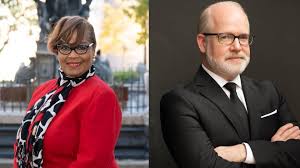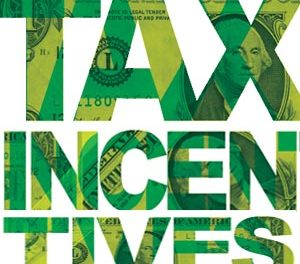The Robertson era for the Greater Memphis Chamber is coming to a close, ushering in with the new year the Townsend era.
Following the murder of Chamber president Phil Trenary, the Chamber needed someone who would be a steadying influence and would continue his sincere, passionate focus on public policy and how the Chamber could improve Memphis at its grassroots. It was a focus that Beverly Robertson adopted and expanded as she reached out to sell the importance of the Chamber in neighborhoods unsure of how it affected lives there.
With 19 years as chief communications officer for Holiday Inn Worldwide, 17 years as executive director of National Civil Rights Museum, and as principal at her communications firm, Trust Marketing, she drew on those skills and her broad experience to pursue a plan to reposition the Chamber in Memphis’ urban core. Her credibility was enhanced when her comments did not always adhere to Chamber hyperbole and talking points and were occasionally too candid for some members.
It’s hard to say that the efforts overcame the resistance to the idea of the Chamber as more than a business organization achieved all of her goals, but she was likely the first president of the Chamber that spoke to groups in places like Orange Mound. After all, in many places for decades, a sentence that began with “the business community” and ends with how they can help results in arched eyebrows and shaking heads.
There was of course the cheerleading that every Chamber president is called on to deliver but she delivered it with conviction and good humor while providing the Chamber with a much-needed diverse profile after 120 years of white men at the helm of the organization.
Making The Transition
From the beginning, Mrs. Robertson was a transition president. She even said as much when she was named to the position, and as the leadership shifts to Chief Economic Officer Ted Townsend, it should be uneventful and undramatic with the help of a Chamber staff that is solid and strong.
Mr. Townsend is the first Chamber president in decades who is experienced in economic development and putting deals together. Had Mr. Trenary lived, he would likely have recommended Mr. Townsend as Chamber president at his own retirement. He was like many of us who thought for many years that he should be president.
There are many reasons that he is well-suited for this position, but chief among them is his tendency to shoot straight and his unwillingness to be content with predictions that the Memphis region is destined to always be dominated disproportionately by low-wage, low-skill jobs.
For almost seven years ending in 2018, he was deputy Commissioner for the Tennessee Department of Economic and Community Development, where he earned good reviews from state officials and from the people who worked for him. The ability to navigate state agencies and understand and influence state policy may end up becoming his most important skill.
Following that state job, he moved to another one – chief economic development and government relations officer for University of Memphis – and finally in September, 2020, he went to work as Chief Economic Officer at Greater Memphis Chamber.
More Action Rather Than More Plans
In his jobs, he developed a reputation for aiming high and creating economic development plans with priorities, strategies, and measurements.
It’s exactly what is needed in economic planning here. For way too long, we talk much, much more than we act. We roll out a plan that within a few years is never heard from again.
A few years ago, the Chamber hired a Little Rock consultant who issued recommendations for a stronger economy. About eight years ago, it was A Roadmap for Transforming the Metro Memphis Economy that was facilitated and directed by the Brookings Institution. Seven years earlier, in 2006, there was the Memphis Fast Forward economic development plan and five years earlier than that, the Chamber spent more than $300,000 for the regional economic development plan called the Governors’ Alliance for Regional Excellence.
And yet, over the time of these reports, studies, and recommendations, the trajectory for key economic indicators got only worse.
For decades, we have defined success by measuring where we are now to where we were rather than measuring us against a competitive set of cities. Finally, that has changed, and like few Chambers of Commerce in the country, the Greater Memphis Chamber is the one delivering data, positive or negative, that allows the public to judge the effectiveness of its work.
Increasing Accountability to the Public
Mr. Townsend was instrumental in September, 2020, in the creation of the Chamber’s new data-based Center for Economic Competitiveness and I’ve written previously about its value. The dashboard compares Memphis to Louisville, Kansas City, St. Louis, Nashville, Birmingham, New Orleans, and Indianapolis, and candidly shows how Memphis is not competing pace in several pivotal categories.
It’s a rare role for a Chamber which normally is all about presenting only positive messaging, but it seems an extension of Mr. Townsend’s love of data. Already, he has become known as a data maven. He enjoys peppering his presentations and surprising his audiences with obscure data points about the Memphis region.
He also has a reputation for setting goals that are more than incremental ones, the kinds that force a city and its organizations to stretch to achieve them.
So far, the Chamber has set a goal of 50,000 new jobs by 2030. It’s unclear at this point if that’s 50,000 jobs within Memphis or within the region but we suspect its 50,000 jobs within the MSA. Mr. Townsend said these 50,000 jobs are aimed at the technology and manufacturing sectors.
In 1990, the Chamber annually held news conferences to announce that 10,000 new jobs had been created in the previous year. While 50,000 jobs by 2030 won’t match those numbers, if the jobs growth is more than natural growth and doesn’t include every job, including fast food jobs and lots of TDL jobs, like it did in the 1990s, it could be an important disruption to our trend lines.
It’s a tall order and a gutsy move, because he knows that he and the Chamber will now be judged on whether it is reaching that goal.
He often citesa statistic that surprised almost everyone in Memphis – it leads the nation in percentage of Black women computer occupations. It was an encouraging data point although it’s rarely coupled with the fact that the workers here are paid at a lower rate when compared to other cities.
Diversity Is A Competitive Advantage
For 17 years, I’ve blogged about the need to see our diversity as a competitive advantage so it’s encouraging that the foundation for the 50,000 jobs is our region’s diversity. In the end, diversity can’t be another Chamber talking point. It has to have a detailed action plan built around it.
It’s interesting to hear that Memphis is on the short list for 55 companies with 15,000 jobs; however, it would be useful to learn how many of these we actually get and a matrix that shows a breakdown of the reasons Memphis was not chosen.
Mr. Townsend takes over the Chamber at a challenging time. Based on the Chamber’s own data dashboard, Memphis faces some troubling economic trends. Many of these are based on structural problems that today limit our community’s ability to compete for high-skill, high-wage jobs and require collaboratives far beyond the Chamber. Its role is to educate, convene, and mobilize such efforts because solutions won’t be the Chamber’s alone, nor is it fair to expect them to be.
As a membership organization, the Chamber has to balance responsibilities, providing leadership on key issues as a civic anchor while providing services and responding to members. As a result, the Chamber has often defaulted to happy talk that glosses over problems and hyperbole that understates a true state of our region’s economy.
The Top Priority
The good news is that Mr. Townsend has shown the willingness to talk straight. Yes, he’s unfailingly optimistic but then too, there are reasons for optimism right now (as long as they are not knowingly misleading).
The 50,000 jobs are now the measurement against which its progress is evaluated along with whether they increase incomes and job skills.
That said, the ultimate measurement for success is if we are closing the racial income gap for our region. It’s a $23 billion opportunity, and whether we are making progress with this should be an overriding data point for our economy.
*****
Join us at the Smart City Memphis Facebook page and on Instagram for blog posts, articles, and reports relevant to Memphis.





